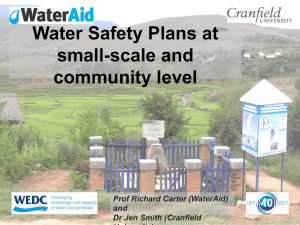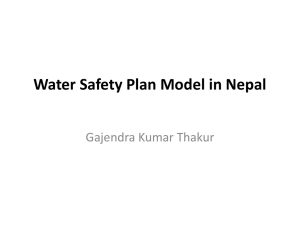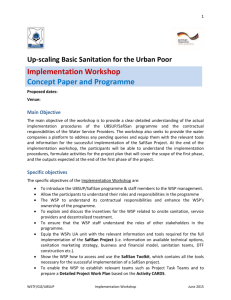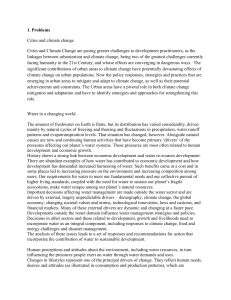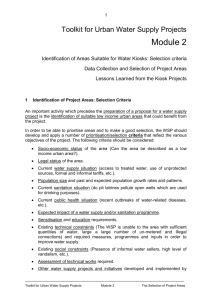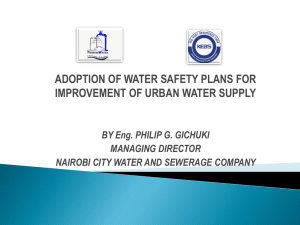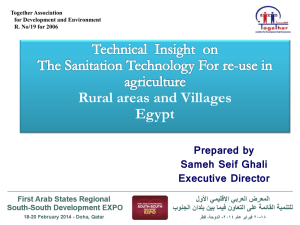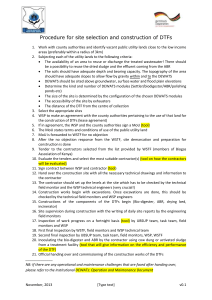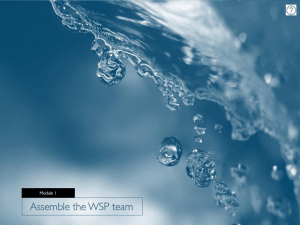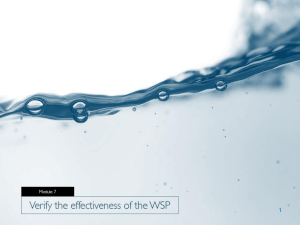WECF: Water Safety Plans in Schools
advertisement
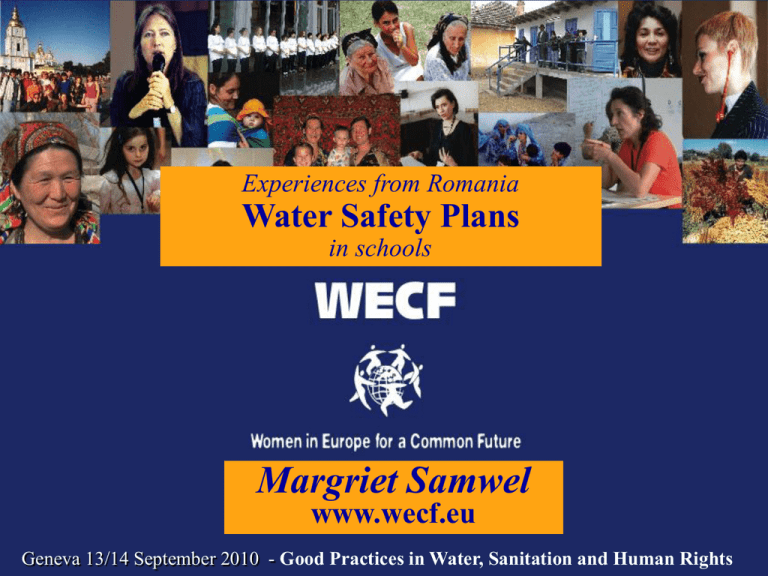
Experiences from Romania Water Safety Plans in schools Margriet Samwel www.wecf.eu Geneva 13/14 September 2010 - Good Practices in Water, Sanitation and Human Rights Who takes care for the rights on access to safe W&S of the rural citizens? For example Romania: 7 million villagers obtain drinking water from mostly unprotected wells • Drinking water quality often does not meet the requirements of the Drinking Water Directive: nitrate, bacteria • In rural settings only 20% of villages have access to improved sanitation 2 Practice in rural areas of CE and EECCA • Problem identification does not lead to action from local citizens or governments, neither form national authorities • Although 30 - 50% of the citizens live in rural areas, focus of the most politicians is on urban areas • Most rural villagers lack: - participation in decision-making processes - access to information - financial resources - ownership The approach of a Water Safety Plan Monitoring System Assessment Identification of measures which minimise and manage the risks Planning and Implementation Source WHO Management and Communication Developing WSP in rural settings-involving schools 1. Capacity building - understanding of water supply system 2. Investigation -water tests - interviews - sanitary inspections 3. mobilisation of the community -Providing information 4. Identifying and formulating -water and sanitation related problems -plans and actions for improving the situation -accountability -Who is responsible for what? What we did: Adaptation of the WSP approach for small scale water supplies to schools WSP - Toolbox for schools • Materials for water tests, like nitrate, colour • Manual in local language including - Introduction of WSP - Background information for teachers - Suggestions for activities - Questionnaires for different stakeholders - Checklists for sanitary inspection of wells, taps - Forms and examples for reporting results 5 What we did: Introduction of WSP in villages Providing information about WSPs • Public - school meetings • Testing nitrates in drinking water Training of teachers and workshops • How to involve pupils and stakeholders • Identification and selection of the activities Experiences In General • Teachers and pupils were motivated and enthusiastic about activities- Nitrate test were very appreciated • Activities were educative and relevant for the local environment • Results depended considerable on motivation and available time of the teachers, and on support of the local NGO Results: Interviews by schools in 6 Romanian villages • Authorities responsible for water supply - No budget for monitoring and operation of public wells - Public taps are partly monitored - Public has access to analyses results • Local health authorities - Respondents said water is not protected and not tested - One out of 6 respondents received analyses results - In 4 out of 6 villages Nitrates and Giardia Lamblia are a problem Summery of results of analyses • More than 70% of the wells exceed the nitrate limit of 50 mg/l • Depending on the geo-hydrological conditions no or extremely high seasonal fluctuations of the nitrate concentration in water was observed • Most villagers are aware about bad water quality • Low awareness on causes of water pollution Results: Example Identified sources of pollution • Unsealed latrines • Husbandry raised within the households • Agricultural chemical substances (in particular nitrogen) • Detergents and cosmetic products used and discharged • Randomly throwing garbage and household refuse • Flooding and overflows affecting groundwater • Dust accumulating in uncovered wells 10 Results: Example Water Safety Action Plan • • • • • • • Realisation of a safe sanitation system Animal farming system in remote places Using ecological landfill Adequate coverage of the wells Collaboration of citizens with the local authorities Training of citizens for proper hygiene Construction of central water supply system 11 “Developing WSP involving schools/communities” A good practice in relation with access to safe W&S? Criteria of good practices Normative • Availability • Accessibility • quality/safety • affordability • acceptability Cross-cutting • non-discrimination • Participation • Accountability • Impact • sustainability A well-managed WSP is a participative - informative -transparent process accountability, impact, sustainability, non-discrimination Planning + implementation Availability, accessibility, Quality/safety, affordability, acceptability Conclusion WSP can be used as an instrument for mobilising communities and authorities on all levels, covering in particular the cross cutting criteria - which should lead to a fulfilment of the main criteria Only a well-informed and self-confident public is able to request her rights and to fulfil her duties 15 Thank you for your attention! v www.wecf.eu vvvv
